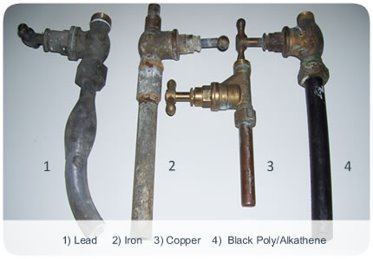Lead can get into your tap water if it sits in old lead pipework in your home. Our partner, Anglian Water, shares information on how to keep your water lead-free.

Pregnant women and parents will be making healthy decisions every day about the food and drink they consume or give to their little ones. We all know drinking water is a vital part of a healthy diet, but have you ever thought about checking if your pipes may be causing lead to enter your drinking water?
The risk of lead poisoning these days is very low, as lead isn’t now usually used in household products such as paint and food containers. If your house was built before 1970, there’s a small chance it may contain lead pipes, which can cause lead to enter into your drinking water.
Lead can also get into your water supply in other ways, such as from the use of lead solder, even though this was banned for use in 1987 on drinking water plumbing systems or from certain brass fittings.
The risk of is low, but exposure to lead can be harmful to unborn babies and children aged 10 and under.
The risk of lead poisoning is low, but where the build up of lead does occur it can be harmful. This is why the World Health Organisation recommends everyone should minimise their exposure.
During pregnancy and early life, babies and children absorb more lead than adults due to their growing bones and other organs, which lead can form deposits in.
Where it does occur it can cause developmental delay and learning difficulties in children. However there are some simple, cheap things you can do at home to reduce exposure to lead in drinking water.
If your property was built before 1970, you can do some simple checks around your home to see if you have lead pipes. These are really easy to do, but if you have any concerns or are unsure please contact your Water Company who will be able to advise you.
Most Water Companies will offer a free testing service, where they will take a sample of water and test it for lead.
Not sure who your Water Company is? You can find out by checking out WaterUK
Most water samples tested will contain below the legal limit of lead, providing reassurance that no further action is required.
Where further action is required your Water Company will contact you to discuss the next course of action with you.
To find out if you have lead pipes inside your home, first, you should find the pipe leading to your internal stop tap and the kitchen tap. It’s usually under your kitchen sink or in the downstairs toilet.

Unpainted lead pipes will be dark grey or black, and their joints will look swollen. You could try and gently scrape the pipes with a coin. If they’re lead, a shiny silver strip will appear.
Another way to check is to tap the pipe with a metal object. A lead pipe will produce a dull thud rather than a clear ringing.
You may not always be able to see the pipework, so if your property was built before 1970 please contact your water company for further advice.
You could also try some of the simple measures below to reduce any potential lead in your water supply.
Lead has the potential to dissolve into drinking water when the water has been in contact with lead pipe or a source of lead for a few hours or longer. So, if you have lead pipes or a source of lead such as solder, here are some simple steps to minimise the risk of lead getting into your water: